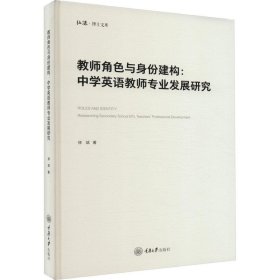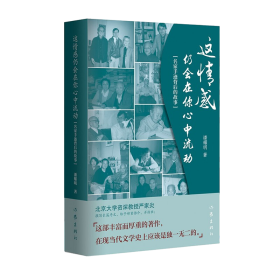
教师角色与身份建构:中学英语教师专业发展研究
正版好书
¥ 42.14 4.3折 ¥ 98 九五品
仅1件
河北保定
认证卖家担保交易快速发货售后保障
作者徐斌 著
出版社重庆大学出版社
出版时间2023-02
版次1
装帧精装
货号B20-05
上书时间2024-12-14
- 在售商品 暂无
- 平均发货时间 17小时
- 好评率 暂无
- 最新上架
商品详情
- 品相描述:九五品
图书标准信息
- 作者 徐斌 著
- 出版社 重庆大学出版社
- 出版时间 2023-02
- 版次 1
- ISBN 9787568936378
- 定价 98.00元
- 装帧 精装
- 开本 16开
- 页数 257页
- 字数 380.000千字
- 正文语种 英语
- 丛书 弘深博士文库
- 【内容简介】
- This study selects three English teachers from rural secondary schools inXishuangbanna Dai Autonomous Prefecture as research participants. Guided by anintegrated theoretical framework (the Identity Formation Theory, the History-in-PersonTheory, Identity-in-Discourse and Identity-in-Practice), this qualitative case study adoptsstimulated-recall interview, non-participant observation, documents and field notes asresearch instruments to generate data.
- 【目录】
-
Chapter 1 Introduction
1.1 Personal motivation
1.2 Statement of the problem
1.3 Aims of the study
1.4 Research design
1.5 Significance of the study
1.6 Organization of the study
Chapter 2 Research Background
2.1 A brief history of English language teaching and learning in China
2.2 The urban-rural gap in basic education
2.3 Sociocultural context in multiethnic regions
2.4 Rural teachers\' professional development and the NTTP
2.5 Summary
Chapter 3 Literature Review
3.1 Identity
3.2 Teachers\' identity
3.2.1 Defining teachers\' identity
3.2.2 Major issues in teachers\' identity research
3.2.3 Teachers\' identity and teachers\' knowledge
3.2.4 Teachers\' identity and teachers\' beliefs
3.2.5 Teachers\' identity and teachers\' agency
3.3 Language teachers\' identity
3.3.1 Definitions of LTI
3.3.2 Components of LTI
3.3.3 Previous studies on LTI
3.3.4 Themes in LTI research
3.4 Critiques of previous studies
3.5 An integrated theoretical framework in understanding LTI
3.5.1 Wenger\'s Identity Formation Theory
3.5.2 The Theory of History-in-Person
3.5.3 Identity-in-Discourse and Identity-in-Practice
3.6 Conceptual framework for the study
3.7 Summary
Chapter 4 Research Design
4.1 The research sites
4.1.1 Yunnan province
4.1.2 Xishuangbanna Dai Autonomous Prefecture
4.1.3 Jinghong city
4.2 Methodology
4.2.1 Qualitative research paradigm
4.2.2 Case study approach
4.2.3 Data collection
4.2.4 Data analysis
4.3 Validity, reliability and ethical considerations
4.4 Summary
Chapter 5 The Case of Jenifer
5.1 Jenifer\'s biography
5.2 The teaching context
5.2.1 The school
5.2.2 The students
5.2.3 The school-based professional development
5.3 Jenifer\'s classroom practices before attending the NTTP
5.3.1 The lessonplan
5.3.2 The classroom activities
5.3.3 The teacher\'s and students\' roles
5.4 Jenifer\'s experiences in attending the NTTP
5.4.1 The Trainer-Training Module
5.4.2 The Demonstration Module
5.4.3 The Distance Education Module
5.5 Jenifer\'s classroom teaching in the post-NTTP period
5.5.1 The lesson plan
5.5.2 The classroom activities
5.5.3 The teacher\'s and students\' roles
5.6 Jenifer\'s reflections on doing teacher research
5.6.1 The motivations for doing action research
5.6.2 The personal and contextual constraints
5.6.3 Classroom-level curriculum development
5.7 Discussion and summary
Chapter 6 The Case of Amy
6.1 Amy\'s biography
6.2 The teaching context
6.2.1 The school
6.2.2 The students
6.2.3 The school-based professional development
6.3 Amy\'s classroom practices before attending the NTTP
6.3.1 The lesson plan
6.3.2 The classroom activities
6.3.3 The teacher\'s and students\' roles
6.4 \"The training does benefit my teaching\" --Amy\'s experiences in attending the NTTP
6.4.1 The Trainer-Training Module
6.4.2 The Demonstration Module
6.4.3 The Distance Education Module
6.5 Amy\'s classroom practices in the post-NTTP period
6.5.1 The lesson plan
6.5.2 The classroom activities
6.5.3 The teacher\'s and students\' roles
6.6 Amy\' s reflection on doing classroom-based research
6.6.1 Amy\'s motivations for doing research
6.6.2 Doing the classroom-based research
6.6.3 Personal and contextual constraints
6.7 Discussion and summary
Chapter 7 The Case of Kelvin
7.1 Kelvin\'s biography
7.2 Kelvin\'s teaching context
7.2.1 The school
7.2.2 The students
7.2.3 The school-based professional development
7.3 Kelvin\'s classroom practices before attending the NTTP
7.3.1 The lesson plan
7.3.2 The classroom activities
7.3.3 The teacher\'s and students\' roles
7.4 Kelvin\'s learning experi
点击展开
点击收起
— 没有更多了 —











以下为对购买帮助不大的评价